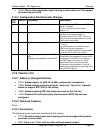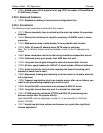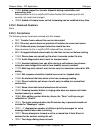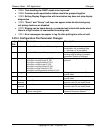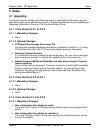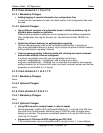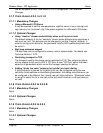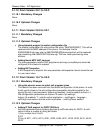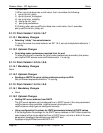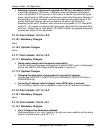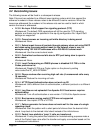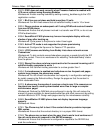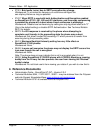
Release Notes - SIP Application Notes
Page 56 Copyright © 2007 Polycom, Inc.
line will be added to SDP. See details in 2.6.4 Configuration File Parameter
Changes.
3.1.7 From Version 2.0.3 to 2.1.0
3.1.7.1 Mandatory Changes
• Using a Microsoft LCS Server
It may be required to set the new parameters voIpProt.server.x.lcs (in sip.cfg) and
reg.x.server.y.lcs (in phone1.cfg) if the phone registers to a Microsoft LCS server.
3.1.7.2 Optional Changes
• Using “inactive” stream mode attribute when a call is put on hold
The default behavior is for the “sendonly” stream mode attribute to be used when a
call is put on hold. This behavior can be changed to use the “inactive” attribute. In
order to configure this behavior, the parameter voIpProt.SIP.useSendonlyHold must
be set to 0.
• Digit map extension support
The digit map can be configured to remove, add or replace digits. For details see
Technical Bulletin 11572.
• Restricting transport to TCP
The transport used by the phone can be restricted to TCP. This means the phone
will not attempt to fail over to UDP if TCP fails. A new “TCPOnly” option has been
added to all parameters which control the transport used by the phone.
• Adding “sticky line seize” behavior for hot-dial (on-hook) dialing
If sticky behavior is desired for hot dialing this can be configured using the new
call.sticky.AutoLineSeize.onHookDialing parameter. Hot dialing sticky behavior can
be configured to be different than normal new call sticky behavior. “Stickiness” refers
to using the same line for a new call as the last-used line when a call has been put
on hold.
3.1.8 From Version 2.0.3 to 2.0.3 B
3.1.8.1 Mandatory Changes
None.
3.1.8.2 Optional Changes
None.
3.1.9 From Version 2.0.2 to 2.0.3
3.1.9.1 Mandatory Changes
None.
3.1.9.2 Optional Changes
None.



